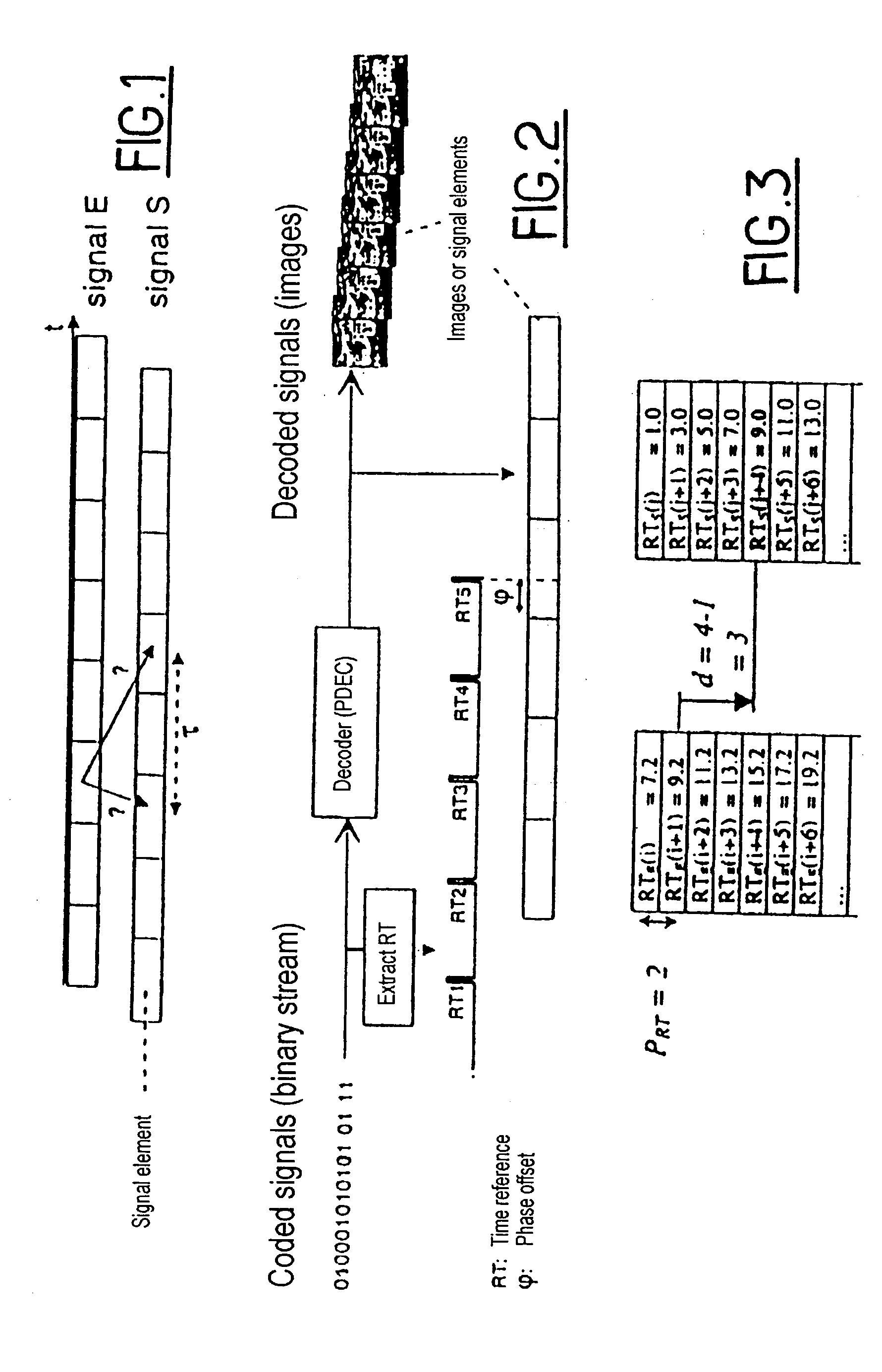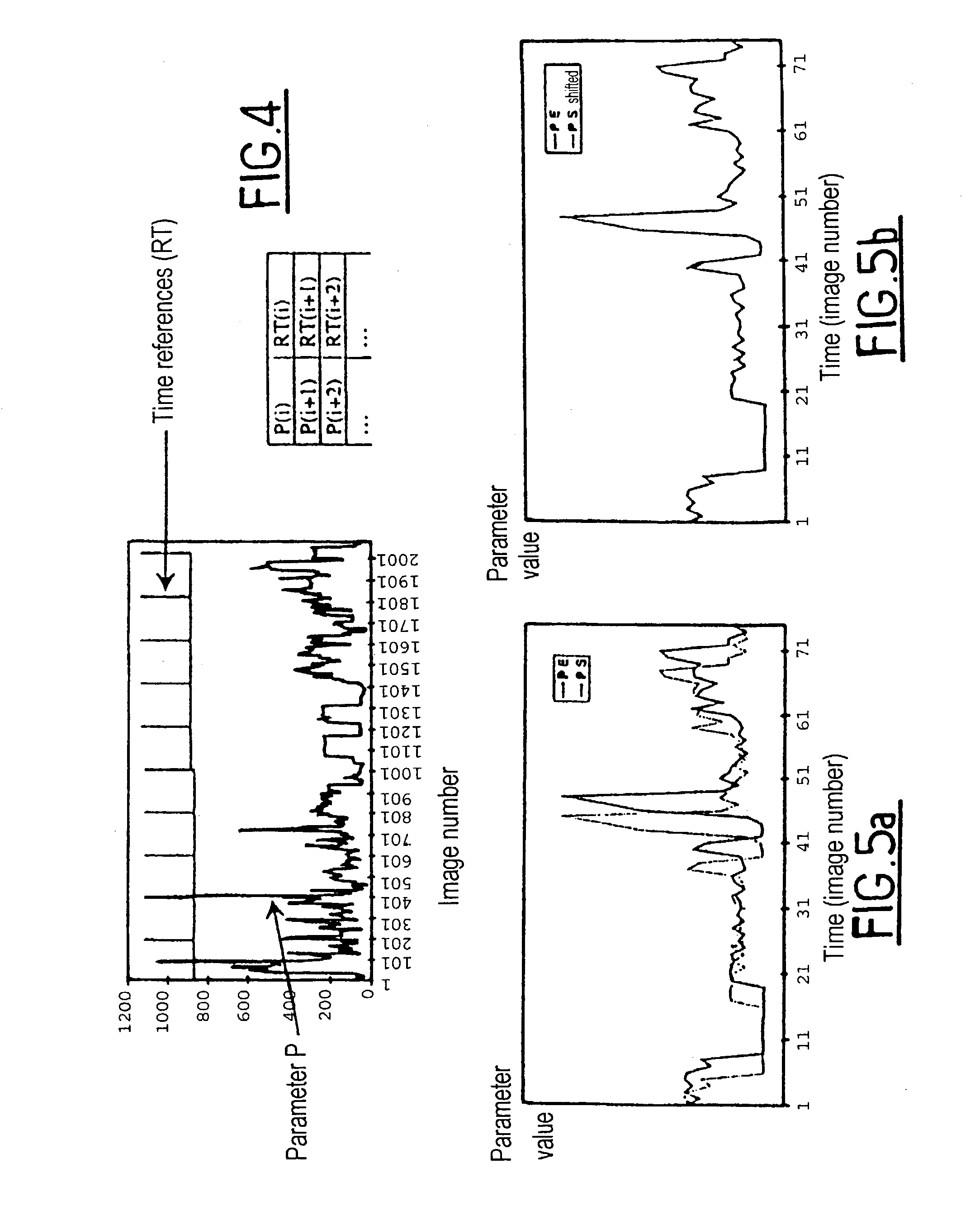Method for synchronizing digital signals
a digital signal and synchronization technology, applied in the field of synchronizing digital signals, can solve the problems of not being able to achieve accurate synchronization (to within one image), expensive implementation, etc., and achieve the effect of accurate time synchronization and simple implementation
- Summary
- Abstract
- Description
- Claims
- Application Information
AI Technical Summary
Benefits of technology
Problems solved by technology
Method used
Image
Examples
Embodiment Construction
[0051] The first step of the method of the invention is preliminary synchronization making use of time references.
[0052] This first step makes use of two series of time references RT.sub.E and RT.sub.S coming from two sequences E and S respectively that are to be synchronized. It consists, for a value RT.sub.S(j) of the series RT.sub.S, in seeking the closest value in the series RT.sub.E(i), and the offset to be applied to one of the series in order to synchronize them. For this purpose, two approaches are proposed:
[0053] A "exhaustive" search:
[0054] A value RT.sub.E(i) of the series RT.sub.E is selected. If the value RT.sub.S(j) of the series RT.sub.Sis greater than RT.sub.E(i), then the sequence S is in advance relative to the sequence E. It is therefore necessary to retard the sequence RT.sub.S by decrementing j until this advance disappears. Conversely, if the value RT.sub.S(j) of the series RT.sub.S is smaller than RT.sub.E(i), then j is incremented.
[0055] IF RT.sub.S(j=1)>RT.s...
PUM
 Login to View More
Login to View More Abstract
Description
Claims
Application Information
 Login to View More
Login to View More - R&D
- Intellectual Property
- Life Sciences
- Materials
- Tech Scout
- Unparalleled Data Quality
- Higher Quality Content
- 60% Fewer Hallucinations
Browse by: Latest US Patents, China's latest patents, Technical Efficacy Thesaurus, Application Domain, Technology Topic, Popular Technical Reports.
© 2025 PatSnap. All rights reserved.Legal|Privacy policy|Modern Slavery Act Transparency Statement|Sitemap|About US| Contact US: help@patsnap.com



